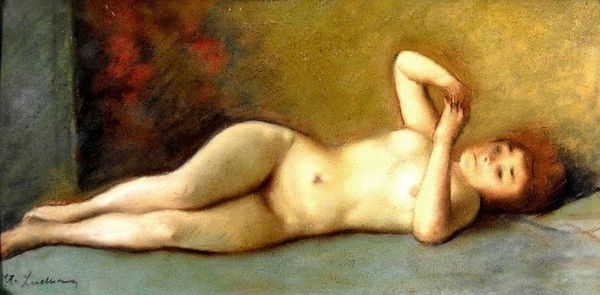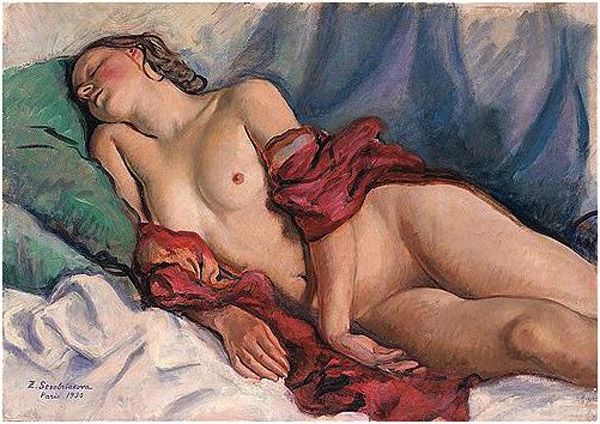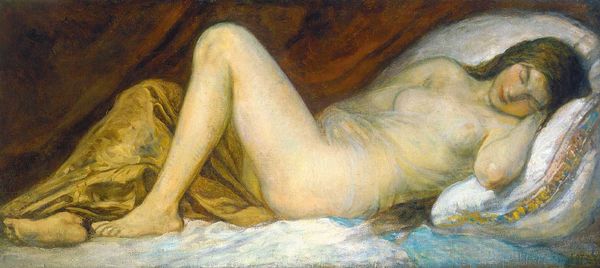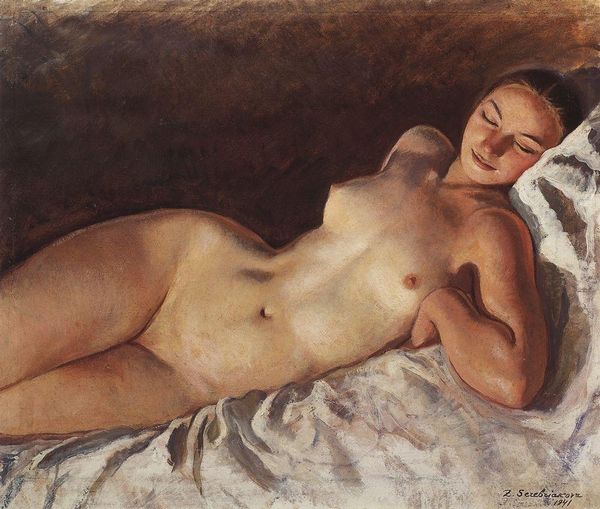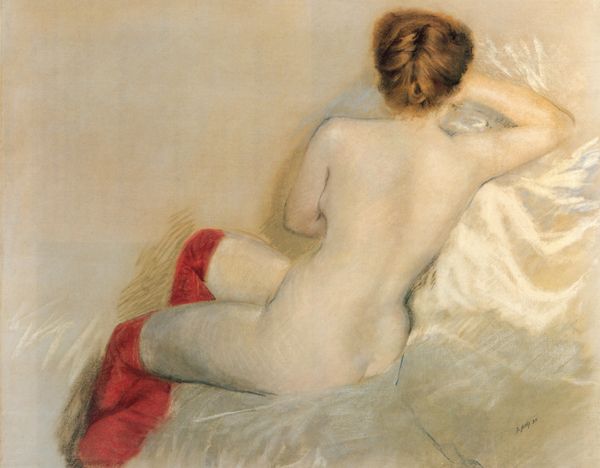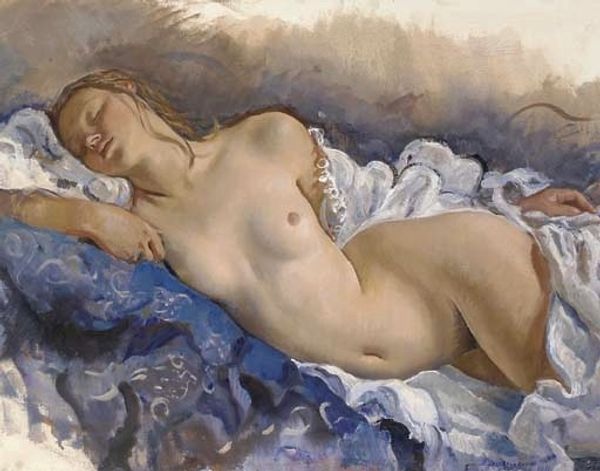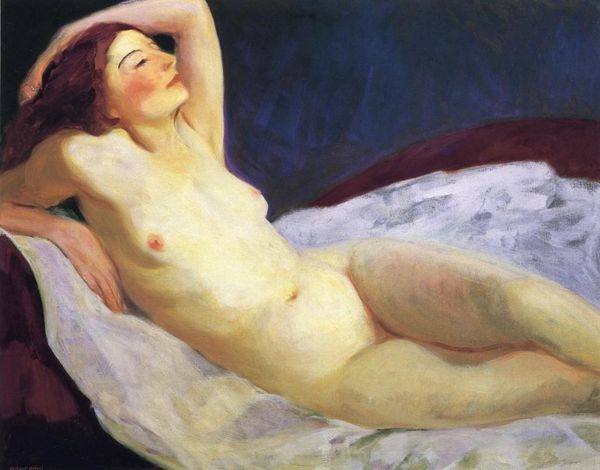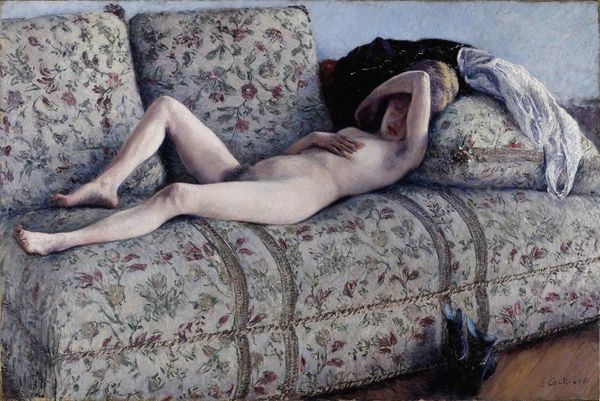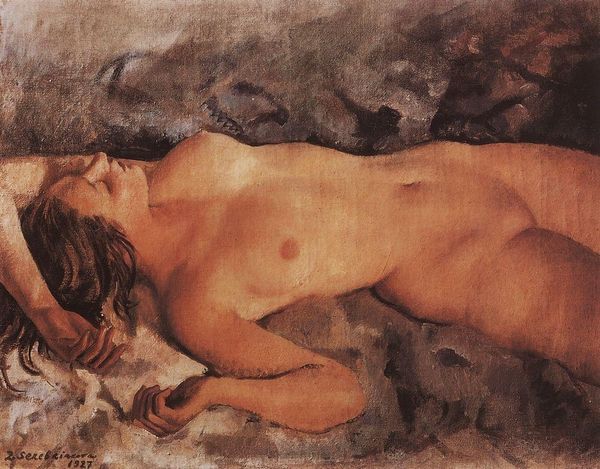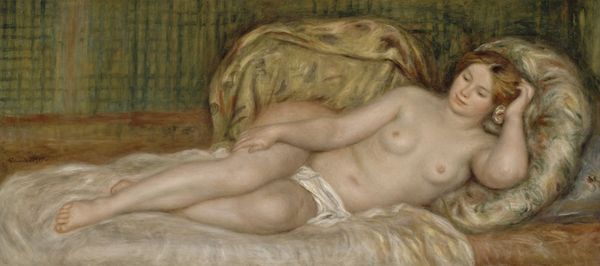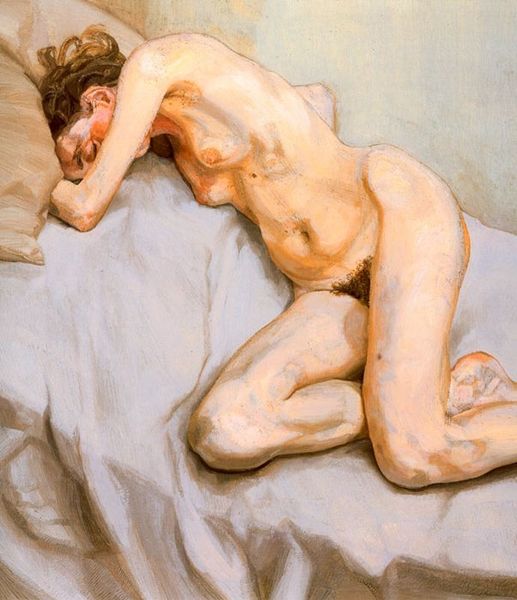
Copyright: Public domain US
Curator: The image before us is "Sleeping Girl in Blue," or "Katyusha on a Blanket" as it's sometimes known. Zinaida Serebriakova created this oil painting in 1923. What is your first impression? Editor: It’s incredibly intimate. The loose brushstrokes and the subject’s vulnerable pose create a sense of quiet contemplation, almost melancholic. There's a real feeling of unguarded exposure, despite the artistic treatment of nudity. Curator: Indeed. Serebriakova often explored themes of domesticity and the female experience in a rapidly changing society. This artwork resonates within the early Soviet context, where discussions of the body and sexuality were being reshaped. Editor: I’m immediately drawn to the blue blanket, a splash of deep color amid the otherwise muted tones. The blue is fascinating—associated with serenity and truth, but also melancholy. Is it meant to reflect the girl's internal state? Curator: It's interesting that you fixate on the blue. I see it as a symbol of both tranquility and the cold realities facing women, even in the domestic sphere. It juxtaposes beautifully with the blush tones in her skin and the almost reverential approach to depicting her. What can that possibly signify in light of current conversations of sexual autonomy? Editor: It also feels deeply personal, like a moment captured rather than staged. Her vulnerability transcends a purely sexual reading. The rosy cheeks especially. It evokes a certain purity, like a pre-Raphaelite angel slumbering. I'm wondering about associations to "sleeping beauty," waiting for a kiss that symbolizes knowledge and adulthood. Curator: And I'd venture to say that it pushes back against those very types. Think of depictions like these as sites for societal and personal identity. Here, there is no story, no real context -- only the figure laid bare. She's the subject in full, both child and woman, a liminality to acknowledge for how gendered power works against women and children. Editor: I see the visual argument you are staking. All of these thoughts considered, what does the work prompt in our own visual lexicon today? Curator: This is what I ponder every day as I seek for historical context and consider these images beyond face value, taking in today's many important perspectives on agency and the self. Editor: Truly so, leaving a fresh awareness to me.
Comments
No comments
Be the first to comment and join the conversation on the ultimate creative platform.
